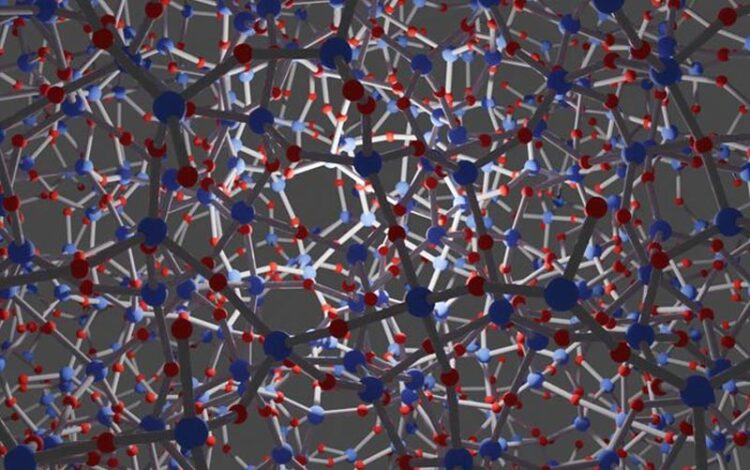Discovery of structural regularity hidden in silica glass

Discovery of structural regularity hidden in silica glass.
Credit: Motoki Shiga
Glass – whether used to insulate our homes or as the screens in our computers and smartphones – is a fundamental material. Yet, despite its long usage throughout human history, the disordered structure of its atomic configuration still baffles scientists, making understanding and controlling its structural nature challenging. It also makes it difficult to design efficient functional materials made from glass.
To uncover more about the structural regularity hidden in glassy materials, a research group has focused on ring shapes in the chemically bonded networks of glass. The group, which included Professor Motoki Shiga from Tohoku University’s Unprecedented-scale Data Analytics Center, created new ways in which to quantify the rings’ three-dimensional structure and structural symmetries: “roundness” and “roughness.”
Using these indicators enabled the group to determine the exact number of representative ring shapes in crystalline and glassy silica (SiO2), finding a mixture of rings unique to glass and ones that resembled the rings in the crystals.
Additionally, the researchers developed a technique to measure the spatial atomic densities around rings by determining the direction of each ring.
They revealed that there is anisotropy around the ring, i.e., that the regulation of the atomic configuration is not uniform in all directions, and that the structural ordering related to the ring-originated anisotropy is consistent with experimental evidence, like the diffraction data of SiO2. It was also revealed that there were specific areas where the atomic arrangement followed some degree of order or regularity, even though it appeared to be a discorded and chaotic arrangement of atoms in glassy silica.
“The structural unit and structural order beyond the chemical bond had long been assumed through experimental observations but its identification has eluded scientists until now,” says Shiga. “Furthermore, our successful analysis contributes to understanding phase-transitions, such as vitrification and crystallization of materials, and provides the mathematical descriptions necessary for controlling material structures and material properties.”
Looking ahead, Shiga and his colleagues will use these techniques to come up with procedures for exploring glass materials, procedures that are based on data-driven approaches like machine learning and AI.
Their findings were published open access in the journal Communication Materials on November 3, 2023.
Journal: Communications Materials
DOI: 10.1038/s43246-023-00416-w
Article Title: Ring-originated anisotropy of local structural ordering in amorphous and crystalline silicon dioxide
Article Publication Date: 3-Nov-2023
Media Contact
Public Relations
Tohoku University
public_relations@grp.tohoku.ac.jp
All latest news from the category: Materials Sciences
Materials management deals with the research, development, manufacturing and processing of raw and industrial materials. Key aspects here are biological and medical issues, which play an increasingly important role in this field.
innovations-report offers in-depth articles related to the development and application of materials and the structure and properties of new materials.
Newest articles
Faster, more energy-efficient way to manufacture an industrially important chemical
Zirconium combined with silicon nitride enhances the conversion of propane — present in natural gas — needed to create in-demand plastic, polypropylene. Polypropylene is a common type of plastic found…

Energy planning in Ghana as a role model for the world
Improving the resilience of energy systems in the Global South. What criteria should we use to better plan for resilient energy systems? How do socio-economic, technical and climate change related…

Artificial blood vessels could improve heart bypass outcomes
Artificial blood vessels could improve heart bypass outcomes. 3D-printed blood vessels, which closely mimic the properties of human veins, could transform the treatment of cardiovascular diseases. Strong, flexible, gel-like tubes…





















